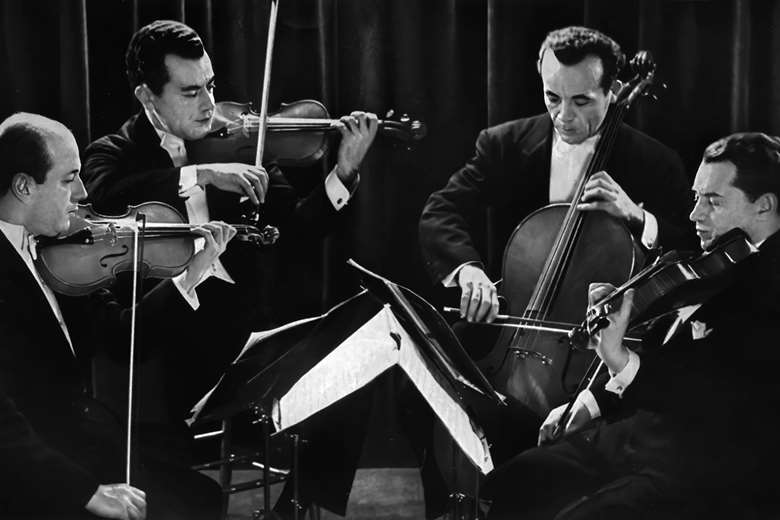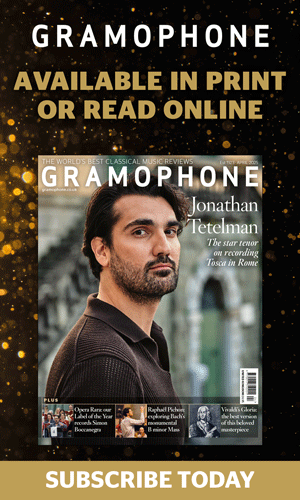Icon: Budapest Quartet
Tully Potter
Wednesday, October 2, 2024
Tully Potter outlines the life of an ensemble that was active for 50 years and whose various members set superb standards of playing that others could only hope to follow

Over a span of 19 years, the Budapest Quartet famously metamorphosed from three Hungarians and a Dutchman into four ‘Russians’ (actually two Ukrainians and two Lithuanians). I have always preferred the earlier incarnation, but the later line-up had great periods, well represented on record.
The Budapest, founded in 1917, was senior by a year to another notable group that came from the Budapest Opera Orchestra; but whereas the Léner kept the same personnel for more than two decades, the Budapest was bedevilled by changes. The founder was Rotterdam-born cellist Harry Son (1880-1942), who had originally gone to Hungary to study with David Popper. His choice as leader was the Jenő Hubay and Otakar Ševčík pupil Emil Hauser (1893-1978), who had been Adolf Busch’s second violinist in Vienna for 18 months. The foursome was completed by another Hubay student, who lasted only two years, and the viola player and musicologist István Ipolyi (1886-1955), who had studied with Hubay and Henri Marteau. The quartet was noted for its democratic rules, which persisted to the end.
Repertoire was learnt during the summers, which from 1922 were spent in Sweden – the group first toured there in 1920. Amateur quartettist David William-Olsson of Stockholm once told to me: ‘My grandfather Alfred Ekström (1873-1947) was a great lover of music and musicians. He built up the power station at Hemsjö, Blekinge, in south-east Sweden where a large mansion house with 18 rooms became a summer resort for his family and many musicians. My mother and her three elder brothers played string instruments and formed a quartet that was coached by Ipolyi, who became our special friend.’ At Hemsjö, the Budapest players could take a working holiday – the kind of regime enjoyed by many ensembles in those days, when there were virtually no summer engagements.
When second violinist Imre Pogány left in 1927, the founders let a wolf into the fold in the shape of Joseph Roisman (1900-74) from Odessa, a pupil of Pyotr Stolyarsky, among others. He at once made a thorough nuisance of himself, and by 1930 Son had had enough (he emigrated to Palestine but returned to Rotterdam and died in the Holocaust). Enter a second wolf, Vilna-born cellist Mischa Schneider (1904-85), who had studied with Julius Klengel.
The Russians despised the Hubay-derived techniques of the Hungarians, particularly their use of the point of the bow in staccato passages – hitherto a Budapest Quartet speciality. Bitter quarrels ensued on how certain pieces should be played, and the Russians did not take kindly to the democratic basis on which the quartet had been set up. It did not occur to them that the Hungarian technique was as valid as their Russian method (it is now used by a modern American quartet).
The quartet was noted for its democratic rules, which persisted to the end
Fed up, Hauser provoked a crisis and quit in 1932, selling his Guarneri violin to Roisman. (Hauser was a real mensch who later, while teaching in Jerusalem, made forays into Germany and Austria to save young Jewish musicians from the Nazis, including the violinists Erich Gruenberg and Eli Goren.) Roisman was elevated to lead the Budapest Quartet, and the finest musician to play in the ensemble, Schneider’s younger brother Alexander (1908-93), replaced him as second violin.
Moving to Paris, the Budapest Quartet became known for its Beethoven cycles at the Salle Gaveau. It was still able to tour the Low Countries, Italy and the United States, plus, of course, England, where it formed one of the spearheads of HMV’s great chamber music decade, alongside the Busch and Pro Arte quartets.
Not all was rosy under Roisman’s leadership, however. At this distance, one can only wonder at the number of nervous breakdowns that afflicted Budapest members, one of whom committed suicide soon after leaving the group. Next to go was the lone Hungarian, Ipolyi, forced out in 1936 – he and his wife settled in Norway, where he was later saved from deportation to a death camp by Count Bernadotte of the Red Cross.
His replacement was Boris Kroyt (1897-1969) from Odessa, a viola player with a beautiful tone who fitted in like a fourth finger of a glove. Yet something had been lost. Gone was the bel canto lightness of the Hauser–Son era and in its place was a massive competence, leavened by Alexander Schneider’s mercurial personality, which lightened the slight stolidity of his colleagues (his importance can be gauged by the deterioration in the group’s playing during the decade he was away).
Emigration to America was inevitable, and the quartet fell on its feet with a residency at the Library of Congress in Washington DC, programming the more conservative American composers such as Griffes, Mason, Piston and Porter. They happily continued to play for expatriate Hungarian charities; but all they knew of the Hungarian language was the phrase for ‘Turn the page’, written in the scores they inherited, plus a few expletives picked up in rehearsal with their Magyar predecessors.
In the post-war years the quartet toured determinedly, as far as Japan, and criss-crossed America on Greyhound buses, staying in cheap hotels. They did not live in each other’s pockets. They gave up playing bridge together after Mischa Schneider spent the entire first movement of a quartet replaying his hand, then got up, bowed to the audience and walked off the platform, leaving the others with mouths agape watching him go. In the 1950s ‘Sasha’ Schneider became involved with the Marlboro summer school, and he eventually involved his brother and Kroyt.
Of the Budapest’s records, Pristine Audio reissued early ones such as Haydn’s Op 76 No 1, Dvořák’s American String Quartet, Beethoven’s First ‘Rasumovsky’ and Tchaikovsky’s Second in F. The later quartet formation was fine in Haydn, Mozart, Brahms and Schubert, as well as piano quartets and quintets with the likes of Artur Balsam, Mieczysław Horszowski, Rudolf Serkin and George Szell – the Bridge label has issued fascinating Library of Congress tapes, as pendants to the myriad Columbia (Sony) artefacts. Yet the Budapest’s reputation rested on Beethoven, twice recorded complete. Op 18 is better in mono, but Alexander Schneider makes all the difference in the stereo set, despite its showing signs of ageing. The Second ‘Rasumovsky’ is unacceptably attenuated, but the rest is still well worth hearing, even if the sublime spirituality of the Busch Quartet is not matched.
Defining Moments
• 1917 – Founding and first concerts
Founded in Budapest – Emil Hauser, Alfred Indig, István Ipolyi, Harry Son; Hubay arranges debut concert in Kolozsvár (now Cluj-Napoca, Romania). 1918: debut in Budapest; Holland tour; members leave Budapest Opera Orchestra for full-time quartet. 1920: Imre Pogány replaces Indig
• 1921 – Based in Berlin
Move to Berlin, debut there. 1924: in London for unissued HMV records. 1925: London debut, more abortive HMV sessions. 1926: successful electric records. 1927: premiere recording of Grosse Fuge; Joseph Roisman replaces Pogány
• 1931 – New World ventures
January: first US concerts; April: Mischa Schneider replaces Son. 1932: Hauser resigns, Roisman leads, Alexander Schneider joins as second violinist; tours of US, East Indies, Australasia. 1933: first Beethoven cycle in concert, Paris. 1934: move to Paris. 1936: Boris Kroyt replaces Ipolyi. 1938: most successful US tour
• 1940 – Library of Congress residency begins
Lasts until 1962, playing Whittall Stradivari instruments. 1940: two RCA Victor recordings; switch to American Columbia. 1944: Edgar Ortenberg joins as second violinist. 1951-52: mono LP Beethoven cycle
• 1955 – Alexander Schneider to the rescue
Resignation of Jac Gorodetzky (successor of Ortenberg, who was sacked) leads to return of Alexander Schneider as second violinist. 1958-61: stereo LP Beethoven cycle
• 1965 – Farewell begins
Quartet completes final recordings. 1967: last concerts, in Buffalo, NY – Leslie Parnas sits in for ailing Mischa Schneider
The Essential Recording

Grieg String Quartet in G minor, Op 27
Budapest Quartet
Pristine Audio (6/43)
That the later Budapest Quartet was a magnificent group at its best is borne out by this 1937 performance – the first recording by the all-Russian line-up, glowing with freshness and Romantic warmth. Not until the emergence of the Smetana Quartet and Quartetto Italiano in the 1950s would quartet playing of such tonal quality, internal balance and homogeneity be heard again.
Explore all of this year's Gramophone Award winners in the 2024 Awards issue – out now. Never miss an issue – subscribe today











